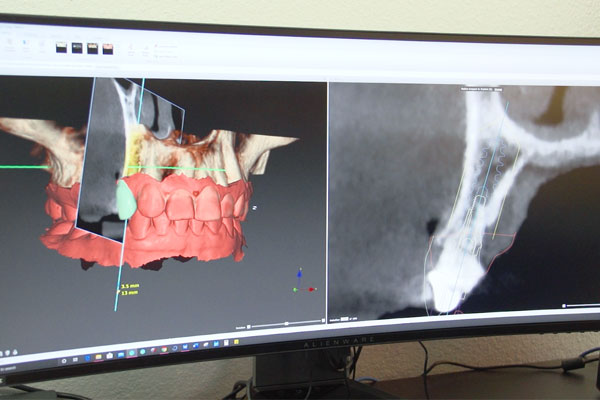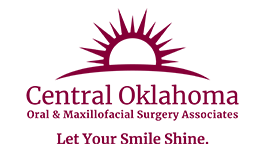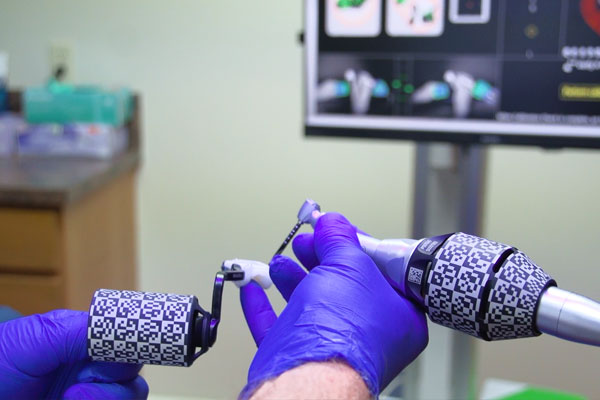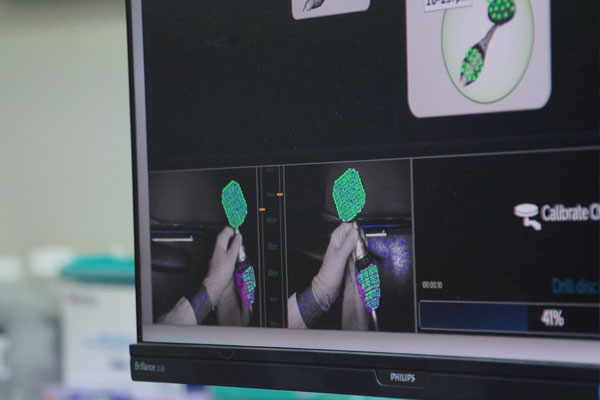Our Technology

We incorporate technology in all aspects of our patients’ treatment to produce the most consistent, predictable and effective outcomes possible. Various types of software and hardware help us in this effort.
To learn more about how our commitment to innovative technology may be beneficial to your treatment, we encourage you to ask about how these tools may be used when you visit us for your consultation. We can provide any information that you may need about this aspect of your care.
Technology Used In Evaluation And Treatment Planning
You will notice the prevalence of technology in our practice as soon as you enter our office. Some of this technology that we use helps us to prepare for and plan your procedure with predictable results, including:
CAD Software
CAD (computer-assisted design) helps us to design temporary crowns or other appliances to be placed on top of dental implants immediately after the implants are placed in the jaw. This software can communicate with our 3D printer (see more details about this below) to create the restoration right in our office. This is a great alternative to having a gap in the smile, or wearing a flipper, for several months while the implant site heals. CAD software may also be used to develop a plan for working within the surgical field.
Intraoral Scanner
The IOS takes multiple photos of the inside of your mouth to create a three-dimensional model that is valuable in both patient education and treatment planning. We can use this technology to illustrate the precise site of the surgery and demonstrate the need for the procedure to help the patient understand and agree to the treatment plan.
Cone Beam Computed Tomography (CBCT)
This unique imaging device captures a three-dimensional image of the patient’s underlying facial structures by compiling a series of two-dimensional images. When the oral surgeon can rely on such an image to help prepare for a procedure, it’s easier to conceptualize the surgical field. This leads to a more predictable procedure and better results.

CS9600 CBCT Scanner
Technology Used In Treatment
Once we get to the intervention stage of your treatment plan, technology plays a role again. These tools can be a factor.
3D Printers
Our StingRay Moon Ray S and Formlabs 2 allow us to print models, temporary implant crowns, and surgical guides based on the designs and information provided by the CAD software discussed above.
X-Guide
This 3D navigation machine produces interactive, step-by-step, guidance for us to place dental implants in a way that is both precise and accurate, hitting the right depth and angle. This state-of-the-art equipment draws on the images created by our IOS and CBCT to direct the implant placement without costing unnecessary time to print a surgical guide.
Importance Of Access To Advanced Technology
Why is technology so instrumental in an oral surgery practice? Well, technology helps our procedures to be more efficient and effective. When the technology gives us such a vivid view of the surgical field, we’re far less likely to encounter unexpected circumstances during the procedure.
Furthermore, when you see that an oral surgery practice is using top-tier technology, it shows that the practice has pledged to stay abreast of the latest developments in the field. Our use of technology also influences our surgical techniques and the instruments that we use in those procedures.
Ultimately, technology ties together the entire treatment process at COOMSA. That’s why we prioritize this aspect of our practice.
How We Stay Informed On The Latest Dental Technology
Of course, our ability to incorporate the latest dental technology into your treatment is dependent on our knowledge of that technology. We are constantly developing and expanding that knowledge in several ways.
As oral surgeons, we are required to complete a certain number of continuing education courses to maintain the licenses that allow us to practice our profession. We choose to dedicate some of that continuing education to learning about the latest developments in technology.
We also rely heavily on our vendor partners who sell and service our equipment to inform us of any changes or upgrades to the software and hardware that they provide. They are on the front lines of intervention, and their updates are tremendously valuable to us.
Common Dental Technology Questions:
How does technology affect dentistry?
Technology influences every aspect of dental treatment, from planning to intervention. It also is useful in other aspects of care, such as back-office operations of record-keeping and billing.
How is CAD-CAM used in dentistry?
CAD/CAM can be used to create a surgical guide to direct the surgical approach. It can also be used to design models for appliances that can then be created using a 3D printer.
Do the technologies used in dentistry affect my recovery time?
Three-dimensional imaging technology helps your oral surgeon be better prepared for your procedure, which allows for a more targeted surgical technique. Because less surrounding tissue will be affected unnecessarily, you should recover more quickly than you would with a more traditional approach to treatment planning for surgery.




